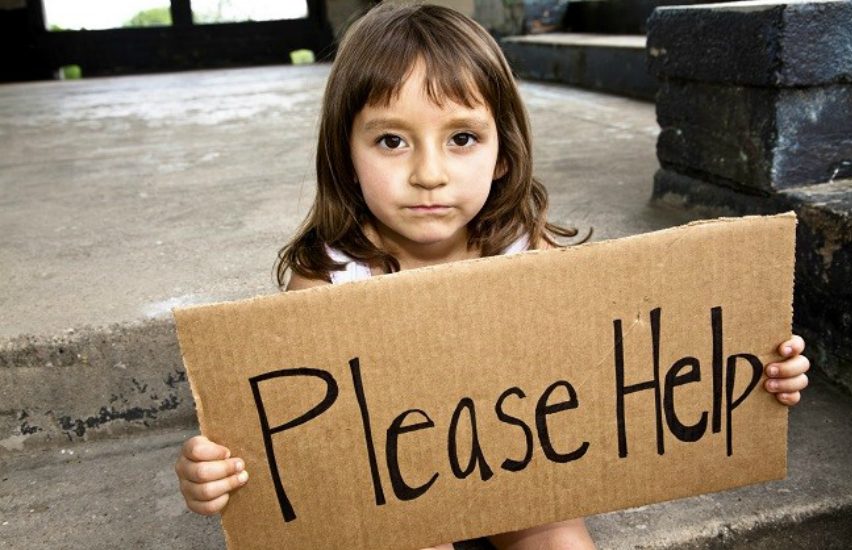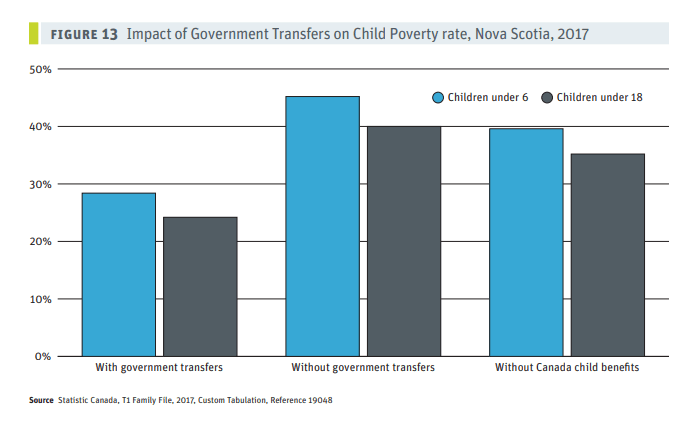
KJIPUKTUK (Halifax) – Provincial governments claim to care about children living in poverty, but it’s mostly words and empty gestures.
We have been reporting on the release of the Report Card on Child and Family Poverty in Nova Scotia for many years now. And year after year the news is grim.
This year’s report, as always published by the Nova Scotia chapter of the Canadian Centre for Policy Alternatives (CCPA), is no exception.
The report uses income tax and Statistics Canada data for 2017.

In Nova Scotia child poverty decreased by less than one percent since the 1989 promise to eradicate child poverty (by 2000) by the federal government. That makes us the worst among all provinces.
This explains why this year’s report is called Three Decades Lost.
In 2017 40,710 children lived in poverty in Nova Scotia. That gave Nova Scotia the third-highest provincial child poverty rate in Canada, and, at 24.2%, the highest rate in Atlantic Canada.
Whereas roughly one in four kids in Nova Scotia lives in poverty, for the very young, children younger than two, that rate is one in three!
The report, that I would encourage everybody to download and read, contains one devastating statistic after another. It’s numbing stuff. The authors of the report know this, and issue the following reminder.
“It is important to remember there are real families and children behind these statistics,” write authors Lesley Frank and Laura Fisher.
“Poverty is not just a measure of inadequate income to meet need. It is realized in food, housing, and transportation insecurity, poor health outcomes, and the frequent despair of ends not meeting due to structurally imposed conditions beyond individual control.”
Especially alarming are the numbers pertaining to visible minorities, immigrant and Mi’kmaw children.
Census data show that 67.8% of Arab children, 50.6% of Korean children, and 39.6% of Black children in Nova Scotia were low-income compared to 20.3% of non-visible minority children.
The highest child poverty rates in Nova Scotia are seen in postal areas where higher percentages of African Nova Scotian and Aboriginal children live (including those that live on-reserve). For example, the child poverty rate in North Preston was a stunning 52.9% in 2017.
When last year’s report showed an actual increase in child poverty rates the provincial government reacted by questioning the data and expressing puzzlement altogether. It promised to look into the data further and get back. It never did.
See also: As poverty and child poverty decline Canada–wide, Nova Scotia bucks the trend
It will come as no surprise to anybody except maybe some bureaucrats at Community Services that child poverty is pretty well a given among families that rely on income assistance.
“A hundred percent of families that rely on government support as their only source of income, live in poverty in Nova Scotia, as the amount of support falls far below the poverty line,” the CCPA report states.
So what to do? Here the report makes some important points that in a way are so common sense they should not require any explanation. At a very basic level the root cause of (child) poverty is a lack of money, and to fix it you can’t rely on charity, you need to tackle that root cause. It’s not hard.

The above chart shows how provincial and federal government income benefits to individuals and families are effective in reducing the rate of child poverty. Benefits to families in Nova Scotia include both children’s benefits and benefits to other family members (federal and provincial Child Benefits, the Goods and Services Tax credit, the Working Income Tax Benefit, Employment Insurance, Income Assistance, and the Affordable Living Tax Credit).
Governments need to continue doing this, and they need to do more of it.
In terms of Nova Scotia specifically the report calls on the government to develop a meaningful poverty eradication plan, with legislated targets and timelines, and targeted measures for marginalized groups.
As well, the authors call for the income assistance program to be reformed and rates to be raised so that recipients can live a life in dignity and free from the despair of poverty. Also, assistance benefits should be indexed to inflation.
Whatever increases were part of the Community Services transformation project were too little and hardly kept up with inflation. “While any increase is no doubt welcomed by cash strapped families, they are still left thousands of dollars below the poverty thresholds annually,” the report states.
More broadly, the report suggests that in order eradicate child poverty other issues, such as affordable housing, liveable wages and early learning and childcare strategies also need to be considered.
With a special thanks to our generous donors who make publication of the Nova Scotia Advocate possible.
Subscribe to the Nova Scotia Advocate weekly digest and never miss an article again. It’s free!




Income assistance thinks they did a huge deal to the people on assistance by raising their cheque anywhere from $10 to $25 a month. How is that any help at all and what can people do to correct this? A lot of people cannot physically go to work so they’re left begging and scrambling trying to eat and be shelter on little or nothing. Most people on assistance are not even getting the proper amount to rent the facilities that they are in. Sometimes they can’t afford to pay the rent and eat there’s things that have to get cut or starve to survive, and that’s beyond cruel.